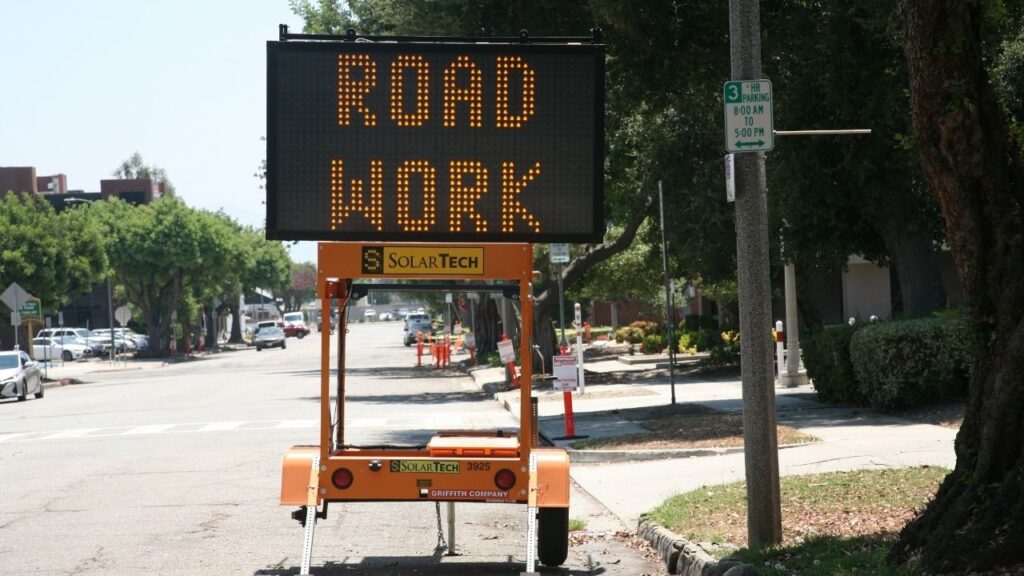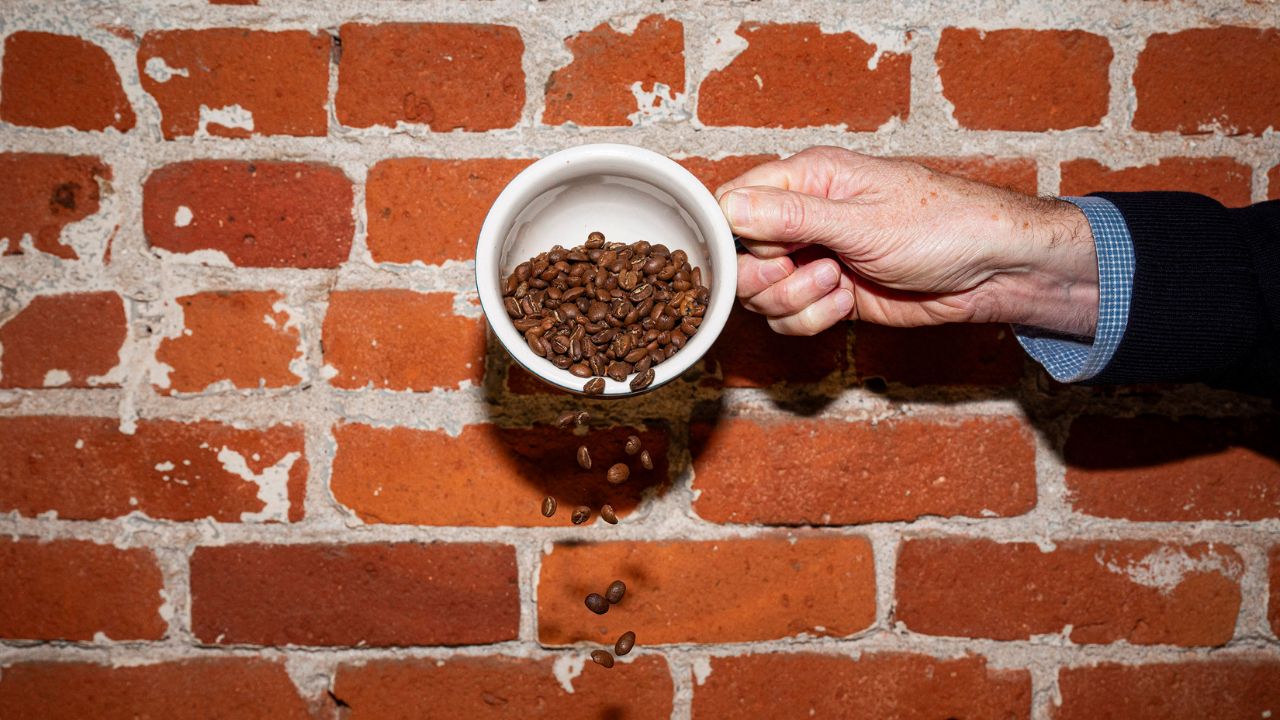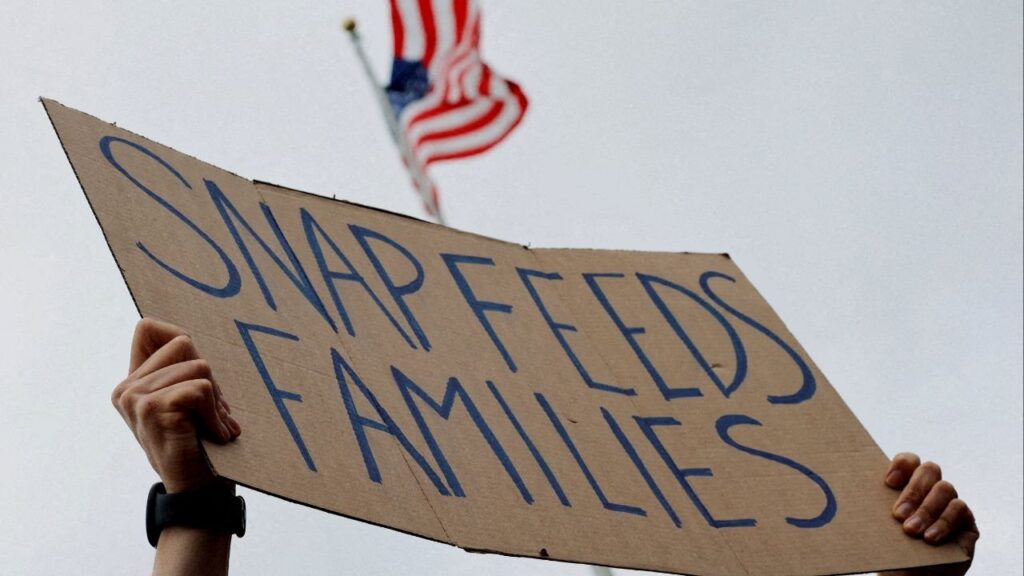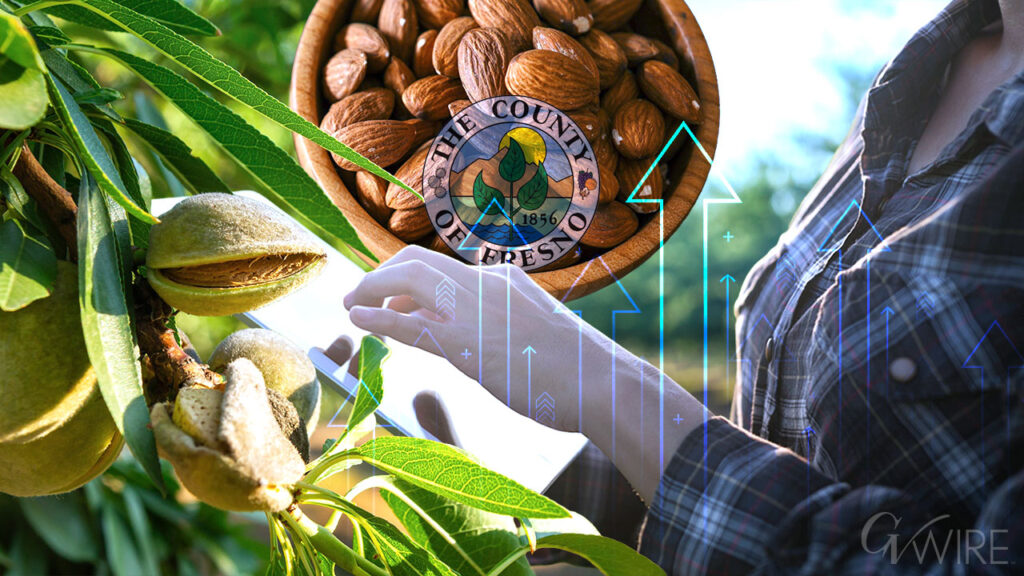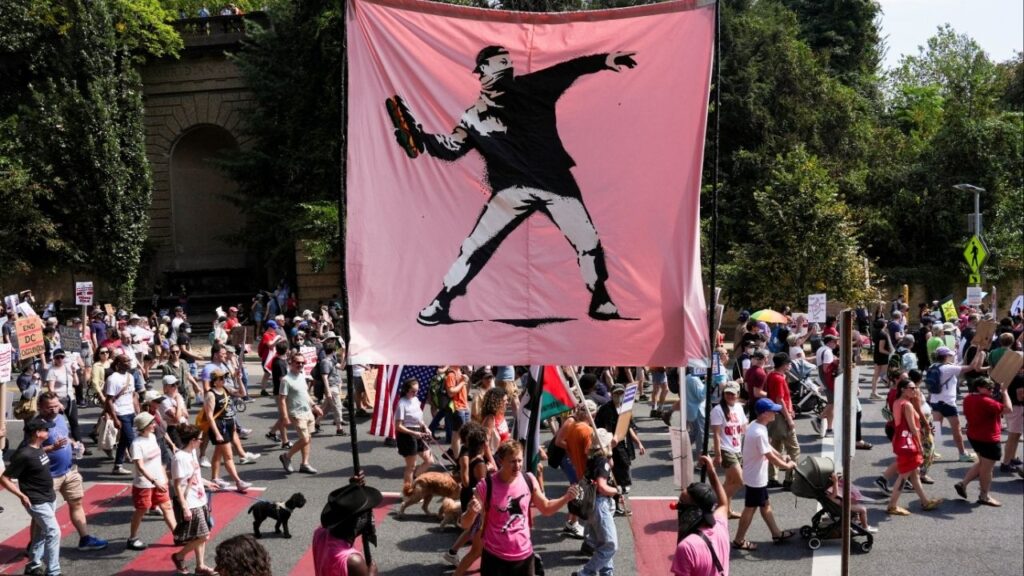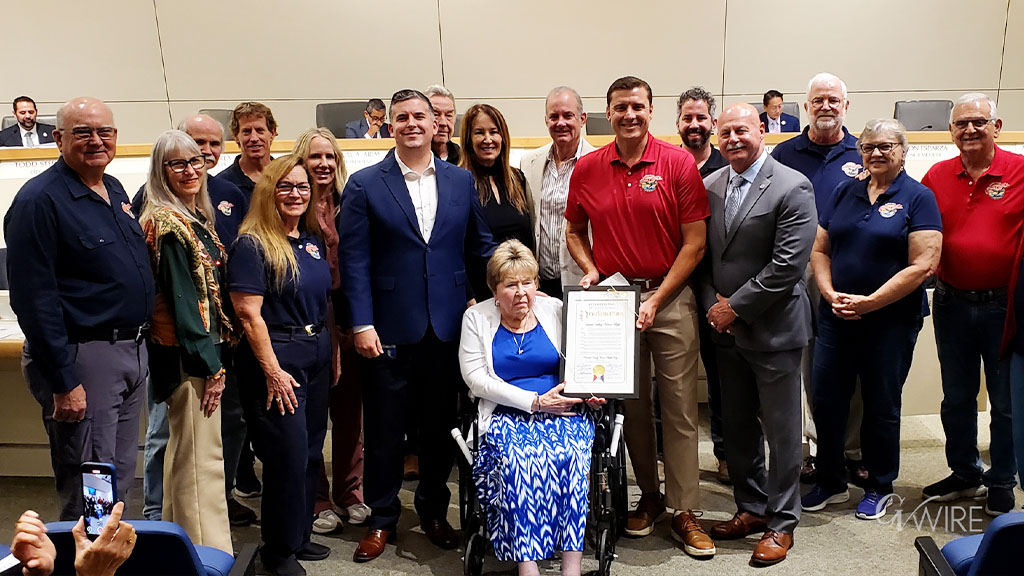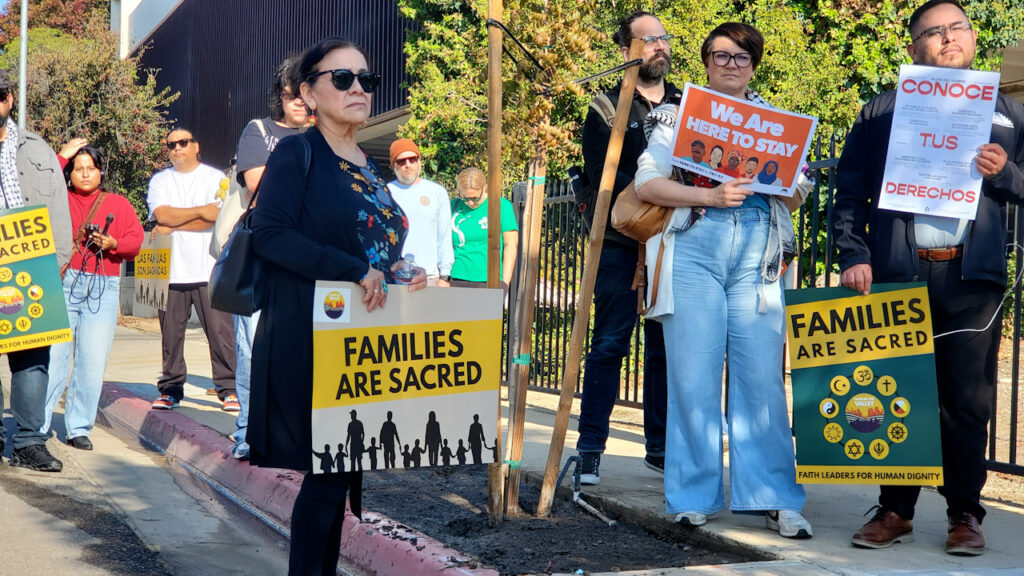Thaleon Tremain, chief executive of Pachamama Coffee, holds a cup of coffee beans in Sacramento, Calif., on Feb. 27, 2024. Wholesale coffee prices are trading near a 50-year high because of shortages related to extreme weather and increased global demand. (Taylor Johnson/The New York Times)

- Coffee prices soar due to extreme weather, like droughts and floods, disrupting supply while global demand continues rising.
- Brazil and Vietnam face severe climate impacts on coffee crops; arabica and robusta production drops, fueling market volatility.
- Experts warn rising temperatures and shrinking suitable farmland threaten coffee's future, driving higher prices and industry instability.
Share
|
Getting your Trinity Audio player ready...
|
When it comes to coffee, Thaleon Tremain has always tried to ignore what the market is telling him.
As the CEO and a co-founder of Pachamama Coffee in California, Tremain sells his specialty beans for more than what the global commodity price might dictate. He wants his customers to think of coffee as a luxury product and pay for it accordingly, so that farmers who grow his beans in countries like Peru, Nicaragua and Ethiopia can cover their costs.
But now, Tremain is worried that coffee is getting more expensive for the wrong reasons. In recent years, repeated droughts and flooding have strained the global supply of coffee, frequently causing prices to soar, as climate change has done for other staples, like cocoa, olive oil and orange juice. At the same time, global demand for coffee has kept rising, with few signs that java drinkers are cutting back. This month, prices in one market broke a nearly 50-year high.
Even though prices might fall, Tremain said the volatility threatened the sustainability of businesses like his — and the livelihoods of the farmers who grow his beans. Lattes will probably also eventually get more expensive.
“Over time, we’re going to see much higher prices,” Tremain said in an interview. “Supply is not meeting demand.”
Despite being one of the world’s most consumed beverages, coffee can be grown only under very specific conditions, requiring misty, humid and tropical climates, with rich soil free of disease. Aside from a small batch grown in Hawaii, the United States produces little coffee domestically. It is the world’s largest importer of the beans. The scarcity of sources leaves global coffee prices susceptible to the effects of extreme weather.
Severe Drought in Brazil Hurt Coffee Exports
According to the U.S. Department of Agriculture, around 57% of the world’s coffee production last year came from arabica beans, and Brazil is the largest exporter. But a severe drought there this summer devastated the harvest, which typically runs from May to September, and it could threaten next year’s crop as well.
In Vietnam, a severe drought followed by heavy rains harmed the world’s largest reserves of robusta, which is the second-most-popular variety globally and is commonly used in instant coffee blends.
The concerns over the crop were reflected in a characteristically erratic moment in the often volatile coffee market. The wholesale price of beans has jumped more than 30% just since the start of November. Futures prices for arabica beans — or what buyers pay for beans to be delivered from producer countries to ports in the United States and Europe — rose to more than $3.30 per pound in mid-December, breaking a 47-year-old record.
“History suggests that coffee prices will only ease back as and when supply improves and stocks are replenished,” David Oxley, the chief climate and commodities economist at Capital Economics, wrote in a note last month.
Extreme weather events are growing increasingly common, experts say, and contributing to swings in coffee prices. In 2011, prices skyrocketed after droughts and heavy rain in several countries squeezed coffee production.
Even as production has faltered, global demand has increased, partly because of the rise in coffee consumption in China. A June report from the U.S. Department of Agriculture found that China’s coffee consumption had increased more than 60% over the past five years.
Supply-Chain Bottlenecks Plus Political Instability Slow Exports
Other factors have also played a role. In 2021, supply-chain bottlenecks caused by the COVID-19 pandemic combined with political instability in South America to slow exports, causing prices to shoot up. But even as high inflation has moderated, many consumer companies are making plans to charge more, including big ones that are better positioned to absorb price shocks. Nestlé, the world’s largest coffee maker, announced last month that it planned to raise coffee prices next year and shrink the size of its packages. J.M. Smucker, whose brands include Folgers and Dunkin’ Donuts’ at-home coffee, announced price increases in October.
It may take up to two years for Brazil’s coffee crop to recover from the drought, said Kevon Rhiney, an associate professor at Rutgers University who researches coffee production.
But he worried that coffee prices were stuck on their upward trajectory, like other valuable crops that have been affected by climate change. Coffee plants will grow less productive as the Earth’s temperature continues to rise, and practices like deforestation will continue to threaten the sustainability of the industry.
“In some ways, this is a sign of what is to come,” Rhiney said. “The areas that are suitable for making coffee will shrink over time.”
The volatility in prices worries Scott Conary, the president of Carrboro Coffee Roasters, an independent company in Carrboro, North Carolina. “From an industry sustainability perspective,” he said, “it’s not healthy.”
In the past, Conary said, he typically dealt with the volatility by raising prices gradually — less than a dollar each time for a cup of coffee at the roaster’s flagship cafes and for a bag of beans. For the coming years, he said, he is most worried about big increases in transportation and storage costs.
But Conary also said he welcomed higher prices, as long as they raised awareness about what went into growing coffee and encouraged customers to buy from smaller, more boutique producers like him.
“People have to get their heads around how coffee is an agricultural product,” he said, adding that consumers “aren’t paying enough for coffee.”
—
This article originally appeared in The New York Times.
By Santul Nerkar/Taylor Johnson
c. 2024 The New York Times Company
RELATED TOPICS:
Categories
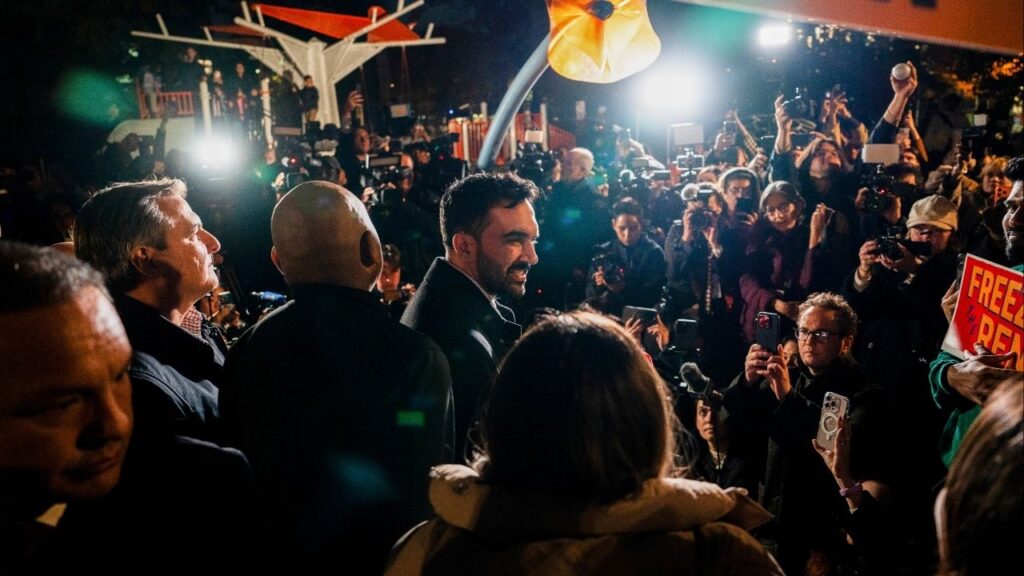
Turnout High as Voters Decide Mayor’s Race
